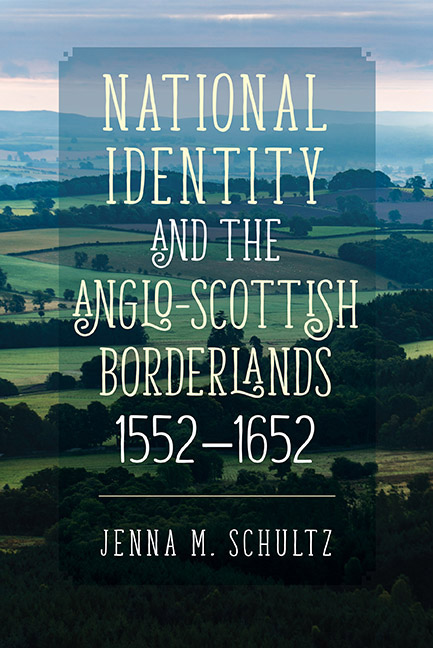Book contents
- Frontmatter
- Dedication
- Contents
- List of Illustrations
- Acknowledgements
- List of Abbreviations
- Conventions
- Chronology
- Map
- Introduction
- 1 Administration
- 2 Borderers
- 3 Border Towns and Fortifications
- 4 Moments of Crisis
- Conclusion
- Appendix 1 List of Wardens, 1552–1603
- Appendix 2 List of Lords Lieutenant
- Bibliography
- Index
- STUDIES IN EARLY MODERN CULTURAL, POLITICAL AND SOCIAL HISTORY
- Frontmatter
- Dedication
- Contents
- List of Illustrations
- Acknowledgements
- List of Abbreviations
- Conventions
- Chronology
- Map
- Introduction
- 1 Administration
- 2 Borderers
- 3 Border Towns and Fortifications
- 4 Moments of Crisis
- Conclusion
- Appendix 1 List of Wardens, 1552–1603
- Appendix 2 List of Lords Lieutenant
- Bibliography
- Index
- STUDIES IN EARLY MODERN CULTURAL, POLITICAL AND SOCIAL HISTORY
Summary
In 2014, national identity was at the forefront of public discourse once again. For the first time since the two kingdoms were united in 1707, Scotland had the opportunity to become a separate state. The ‘Yes’ faction called upon the Scottish sense of equality and opportunity, while the ‘No’ faction emphasized the British ideals of consensus and unity. As independence supporters grew in number, tensions mounted. The last few months before the vote found the ‘Yes’ and ‘No’ factions nearly tied. The pressure was most keenly felt in the Scottish border region. For centuries, individuals of both kingdoms living near the border had enjoyed greater social and economic interactions. Generations of Scots had now established themselves in Berwick-upon-Tweed; Englishmen worked in Coldstream. There was nothing but the rivers, hills and road signs separating the two; England and Scotland had become intertwined. It should be no surprise, then, that after the referendum votes were tallied in September 2014, the border region had one of the highest percentages of voters against independence. The council area now called the Scottish Borders (encompassing Berwickshire, Roxburghshire, Selkirkshire, Peeblesshire and part of Midlothian) had a 66.56 per cent ‘No’ rate. In Dumfries and Galloway in the southwest, 65.67 per cent voted ‘No’, while the national average against independence was 55.30 per cent. The region also had a three per cent higher turnout rate than the already astonishing national rate of 84 per cent. Various factors influenced voting decisions, such as demographic differences, party membership and issues like currency and public spending. Yet since the vote, some Scots have been calling for a second referendum, hoping to reverse Scotland's decision to remain in the United Kingdom. The momentum building around another vote is due in large part to the UK's intended departure from the European Union, otherwise known as ‘Brexit’. However, what the 2014 vote expressed to the rest of the UK was clear: the border had ceased to serve as a marker of difference. After several centuries of peaceful relations, the kingdoms had become intricately tied together and the borderlands represented this shift to a British state more than any other region.
- Type
- Chapter
- Information
- National Identity and the Anglo-Scottish Borderlands, 1552–1652 , pp. 276 - 284Publisher: Boydell & BrewerPrint publication year: 2019

